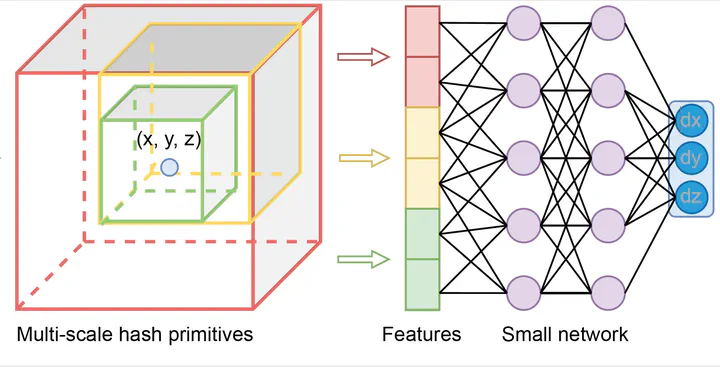Neural Graphics Primitives-based Deformable Image Registration for On-the-fly Motion Extraction
Jul 8, 2024·
 ,
,
,
,
,
,
·
0 min read
,
,
,
,
,
,
·
0 min read
Xia Li
Fabian Zhang
Muheng Li
Damien Weber
Antony Lomax
Joachim Buhmann
Ye Zhang
 Image credit:
Image credit:
Abstract
Intra-fraction motion in radiotherapy is commonly modeled using deformable image registration (DIR). However, existing methods often struggle to balance speed and accuracy, limiting their applicability in clinical scenarios. This study introduces a novel approach that harnesses Neural Graphics Primitives (NGP) to optimize the displacement vector field (DVF). Our method leverages learned primitives, processed as splats, and interpolates within space using a shallow neural network. Uniquely, it enables self-supervised optimization at an ultra-fast speed, negating the need for pre-training on extensive datasets and allowing seamless adaptation to new cases. We validated this approach on the 4D-CT lung dataset DIR-lab, achieving a target registration error (TRE) of 1.15±1.15 mm within a remarkable time of 1.77 seconds. Notably, our method also addresses the sliding boundary problem, a common challenge in conventional DIR methods.
Type
Publication
International Conference on the use of Computers in Radiation therapy